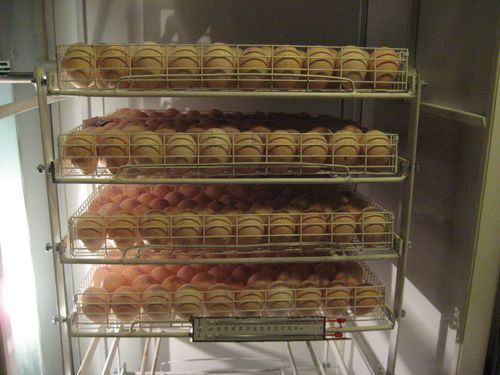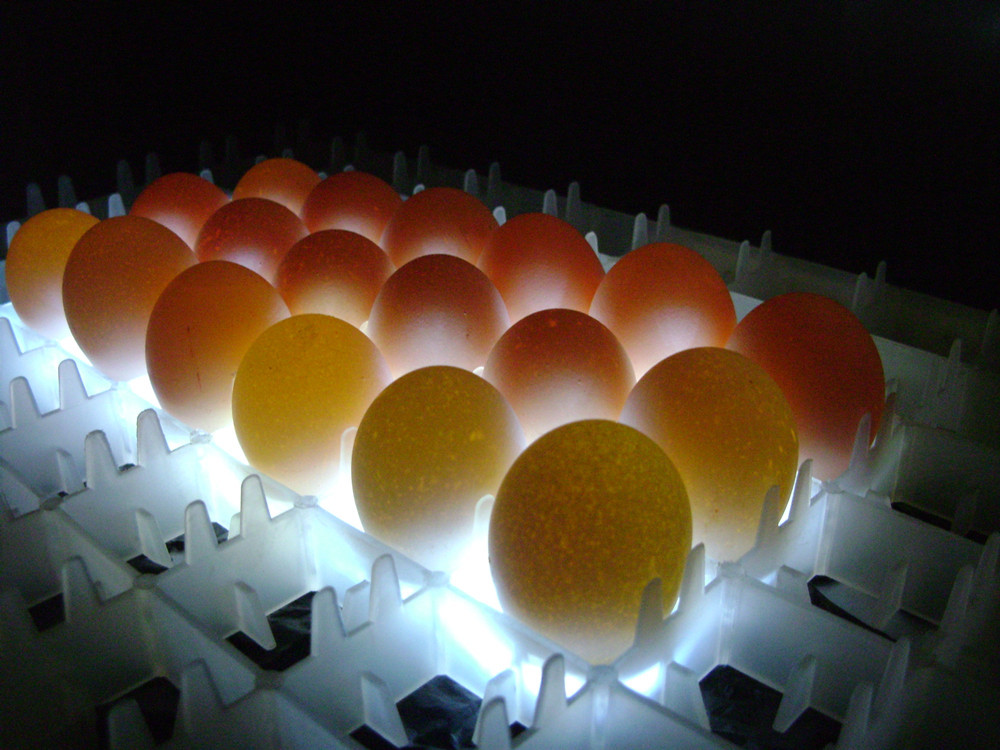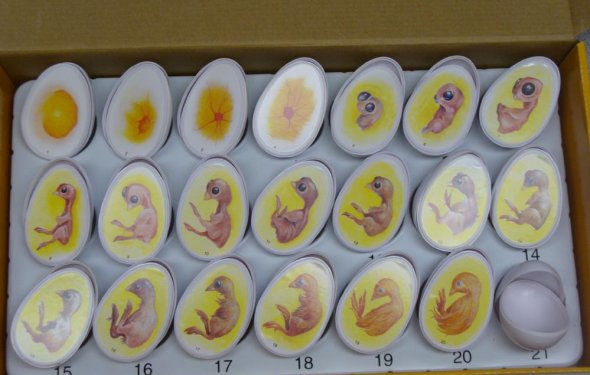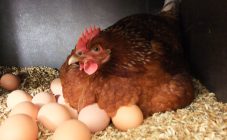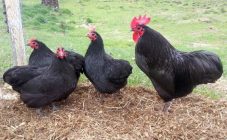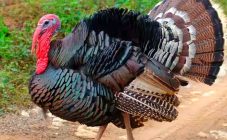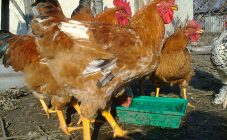It is not uncommon for farmers to hatch turkeys in an incubator if there is a hen turkey. The reason is that it crushes the eggs with its weight. The incubation of turkey eggs requires compliance with certain rules.
Turkey hatching egg
Taking turkey poults in an incubator at home does not require much effort. Success directly depends on how correctly the testicles were collected and how they were stored before being placed in the incubator.
Eggs must be taken from the hen every 2 to 3 hours, they tend to spoil quickly. They can also freeze during the winter. They need to be stored at a temperature of 5 to 10 degrees. The air humidity indicator must be maintained at the level of 70 - 85%.
Eggs that are planned to be used for incubation are recommended to be stored for no more than 10 days, with the blunt end up. Otherwise, the possibility of lowering the percentage of hatching chicks is not excluded.
Storage containers should be well ventilated. If this condition is not met, the embryo may die. To do this, you can use cardboard boxes with holes made in the walls for ventilation. It is recommended to heat the eggs at very low temperatures. This should be done regularly, after 2 - 3 hours. To do this, the room temperature rises to 37 - 39 degrees.
Eggs must be treated with a disinfectant before starting the process. For this, a weak solution of potassium permanganate is used, the temperature of which reaches 30 - 32 degrees. They are placed in the solution for 5 - 7 minutes, and then dried well on a clean cloth.
Incubation of turkeys begins with the correct selection of eggs. To do this, you need to focus on their external signs:
- They have the same size and weight from 70 to 100 grams.
- They are elliptical and the air chamber is located on the blunt side.
- The shell on them is even, without outgrowths and cracks.
- Ovoskupirovanie egg should show that its interior is uniform, and the yolk is in the central part. If it is mobile, such an egg cannot be used for incubation.
Before starting to hatch Big 6 turkey eggs, you must first prepare the incubator. To do this, it is thoroughly disinfected using a lime solution. The incubator is thoroughly washed from the inside with clean water, dried and ventilated.
Then the incubator is pre-switched on. This is necessary in order to check the health of its working systems. The incubator warms up well before laying. It is recommended to turn off the humidification and ventilation sensors. Heating is carried out with the shutters closed.
Stages and modes of incubation of turkey eggs at home
To hatch strong chicks, the eggs are pre-warmed. If this is not done, condensation forms on the top of the shell, which will inhibit the pecking of the turkey poults and also clog the pores.
How eggs are laid in an incubator depends on the model and design. If the device supports the automatic flip function, they are stacked vertically. If such a function is not provided, they are laid out horizontally.
How many days turkey poults are hatched in the incubator depends on the cross of eggs. In light crosses, the incubation period of turkeys lasts up to 27 days, and in heavy ones - 28 days. The process is divided into 4 stages. Each of them assumes compliance with a certain level of temperature and humidity. These conditions are important for the formation of embryos inside the eggs.
- The period lasts up to 8 days. The temperature is set from 37 to 38 degrees, and the humidity indicator does not exceed 65%. Each egg must be turned at least 4 times in 24 hours. On day 8, you need to perform ovoscopy of eggs. Those eggs where the embryo died can be discarded. Of these, babies will not hatch.
- This stage lasts until 14 days. The incubator maintains the temperature in the range of 37.5 - 38 degrees. The humidity sensor is set at 40 - 46%. Each egg must be turned at least 6 times a day. On the 14th day, the embryo already has respiration. Allantois is closed.
- Up to 25 days. The temperature in the incubator is maintained within 37.6 - 37.7 degrees. The ventilation system prevents the eggs from overheating. Every day for 15 minutes you need to turn on the cooling mode. To check if the egg has cooled enough, it must be applied to the eyelid. The egg should be slightly warm. During this period, eggs should be turned over at least 6 times a day. In the second half of the stage, the moisture index can be gradually increased and brought to 66%.
- This is the last period. It ends on day 28. The air temperature in the incubator is maintained at 36.5 degrees, and the humidity indicator does not exceed 75%. You do not need to turn the eggs during this stage. The incubator must be ventilated. For this, the flaps are opened. In the middle of the last stage, the ovoscope is used again. This is to check the development of the chicks. In the lumen, the egg should have a dark color, uniform up to the air chamber itself. The boundaries of the camera should be movable and have black outlines.
The hatching rate of turkey poults is directly dependent on the cross of eggs.
The process of embryo formation can be conditionally divided into the following stages:
- 1 - 7 days the embryo is developing the circulatory system and internal organs;
- 8 - 14 - the chick's beak and skeleton are formed;
- 14 - 18 - the turkey begins to move and already has the ability to make sounds;
- 19 - 28 - the formation of all internal organs of the chick and its central nervous system is completed.
Should turkey poults be helped to hatch in the incubator? This question is asked by many aspiring farmers. If a chick squeak inside the egg for more than a day, but it has not hatched, it is recommended to carefully open the shell from the side of the air chamber.
Now you can gently tear open the foil under the shell to see where the turkey's beak is.
Often there are situations when the chick did not hatch and the squeak from the egg is not heard. In this case, it is also necessary to carefully open the shell above the air chamber. If at the same time a drop of blood is released, the egg must be transferred back to the incubator and wait a few hours. If the blood flows intensively, such an egg must not be returned back to the incubator. The chick will die anyway, and the blood will break the sterility inside the incubator, which can lead to the death of the entire brood.
Impatient farmers tear the foil off their chicks on their own. This cannot be done. It has to come naturally. If the film is simply stuck to the chick's little body, it must be sprinkled with warm water and removed with a damp cotton swab.
When chicks begin to hatch actively, it is better not to turn the eggs over.The crack must be located at the top, otherwise the baby will not hatch.
It often turns out that less than half of all the eggs placed in the incubator hatch. There may be several reasons for this unpleasant situation. Here are the most important ones:
- The eggs have not been fertilized.
- The embryos could be adversely affected by bacteria or fungi that are under the shell. Egg disinfection may have been poorly done before incubation.
- The eggs that were placed in the incubator were poorly heated. Condensation formed, which clogged the pores on the shell. In this case, the embryo is unable to breathe.
- The ventilation system does not supply enough air to the eggs. In this case, one should not forget about such a procedure as additional ventilation of the incubator.
- Farmers change the temperature regime during each incubation period. This cannot be done. The incubator temperature should not change during the period. It can only be changed between periods.
- In the process of turning the eggs, they are sprayed with warm water. This manipulation is only useful for waterfowl eggs, but extremely harmful for turkey eggs.
- There were power outages during the incubation process. As a result, there is a violation of the temperature regime inside the incubator. This leads to the death of the embryos.
- It is very interesting to watch how chickens and turkey poults and ducklings hatch. At the same time, many try to open the incubator door. You can't do that. This leads to a violation of the temperature regime in the incubator.
After pecking, all the shells must be removed from the incubator. They can be used as a vitamin supplement for newborn chicks. To do this, they need to be boiled for 20 minutes in water and chopped.
Turkey poults are still wet after hatching. They need to be allowed to dry, and then removed from the incubator.
Newborn turkeys are placed in a bright and warm place. For this, it is better to use a cardboard box, the bottom of which is covered with a warm and soft cloth. It is recommended to use additional lighting for babies. You can also drip a vitamin complex in the form of oil into each chick's mouth. To do this, you need to use a pipette.
The correct conditions for the eggs are the key to their successful hatching. In order not to destroy the brood, you need to carefully read the instructions for the incubator. Breeding chicks of chicks, ducks and turkey poults requires different conditions. You can find out about this from those breeders who already have experience. In this case, it will be possible to get a full and healthy brood of turkey chicks.


